
Dali has full-sized passive loudspeakers that compete at every price-point, from ‘entry-level’ to ‘brand-new German sports car’ money. But until now, it had only one pair of wireless over-ear headphones, and at nearly four-figures the Dali IO-12 are about as far from ‘entry-level’ as it’s possible to get.
Enter the Dali IO-8. Properly specified, aesthetically convincing and, at approaching half the price of the top-end best headphones from the brand, making these a veritable bargain by Dali standards. So has this apparent penny-pinching allowed Dali to compete in a section of the market that’s approaching ‘real world’?
Dali IO-8: Price & Availability
The Dali IO-8 have been on sale since 8th October 2024. In the United Kingdom they currently go seel for £599 a pair. In the United States they cost $899. While in Australia we're yet to get the official pricing.
This makes the IO-8 Dali's most affordable pair of wireless over-ear headphones so far – but obviously that’s not the same as ‘cheap’, and it’s a price that brings some extremely well-regarded alternatives into play too.
Dali IO-8 review: Features & What's New?
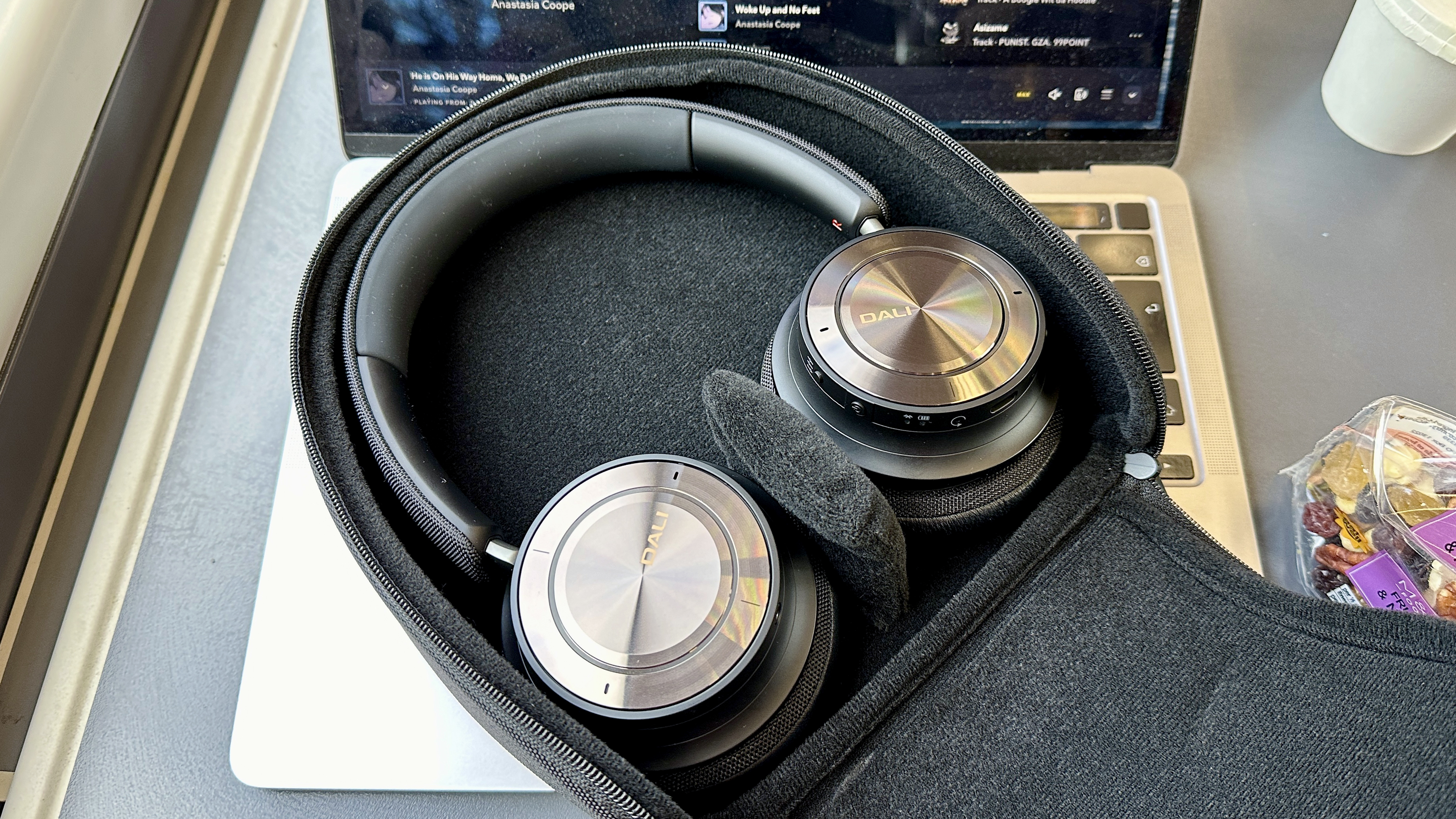
Obviously I’ll get to the nitty-gritty of the IO-8’s fairly focused feature-set, but there’s one feature that’s immediately worth flagging: these headphones can be used wirelessly, of course, but they can also function as hard-wired headphones even if they’re switched off or if their battery is flat.
So if the worst happens, make an analogue connection to the 3.5mm socket on the left earcup and you’re in business. Dali provides a 3.5mm-to-3.5mm cable for this purpose, along with a USB alternative, in a reasonably compact travel case.
Mind you, it will be negligent of you to let the IO-8 go flat. Battery life is a very decent 30 hours with ANC switched on, and an even better 35 hours if you turn it off – and from flat to full takes a shade under two hours. Better yet, you can charge the headphones via USB-C at the same time as listening via a hard analogue connection. So there are no realistic circumstances in which you can’t enjoy the Dali sound.
That sound is delivered by a pair of big (50mm) full-range free-edge paper cone drivers that are good for a frequency response (according to Dali) of 10Hz-43kHz. They’re made from the same material that Dali employs in many of its passive loudspeaker models, and with the same intention: to create a stiff-yet-light diaphragm that delivers optimal damping.
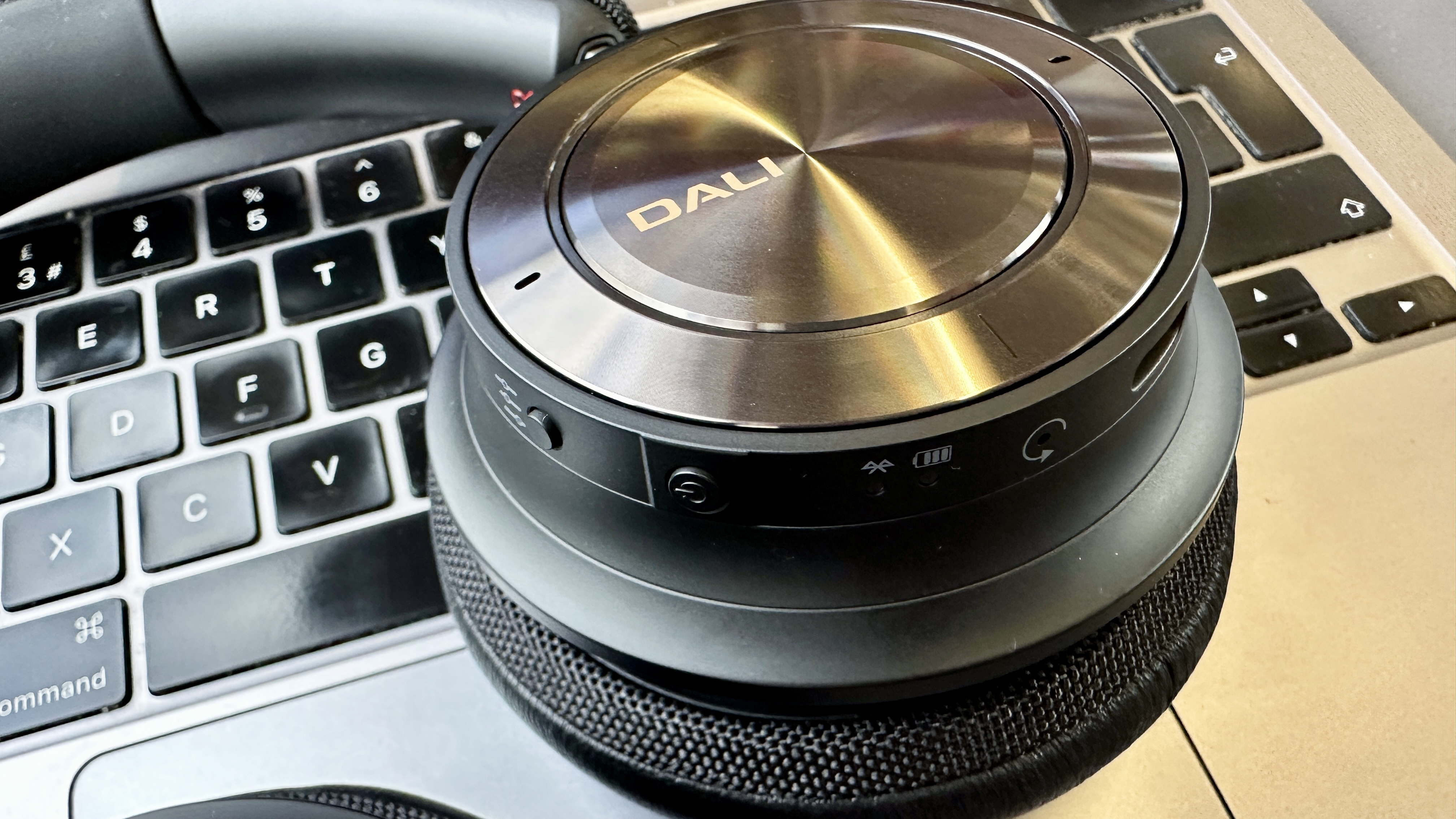
Dali is making a fairly big deal of its ‘true hi-fi sound’ principles where the IO-8 are concerned – basically, it’s the same audio philosophy it applies when designing full-sized speakers. Customers being what they are, though, it’s decided to incorporate a couple of EQ settings (‘hi-fi’ and ‘bass’) that are accessible via a button on the right earcup. I get the strong impression Dali has done so very grudgingly indeed.
The company has prioritised sound quality when it comes to active noise-cancellation (ANC), too. The usual ‘on/off/transparency’ settings are available, but Dali is adamant it’s not looking for class-leading noise-reduction, with what it rather self-consciously calls its ‘Audiophile ANC’. The system is designed to offer some noise-cancellation, of course, but not at the expense of audio performance.
Dali IO-8 review: Performance
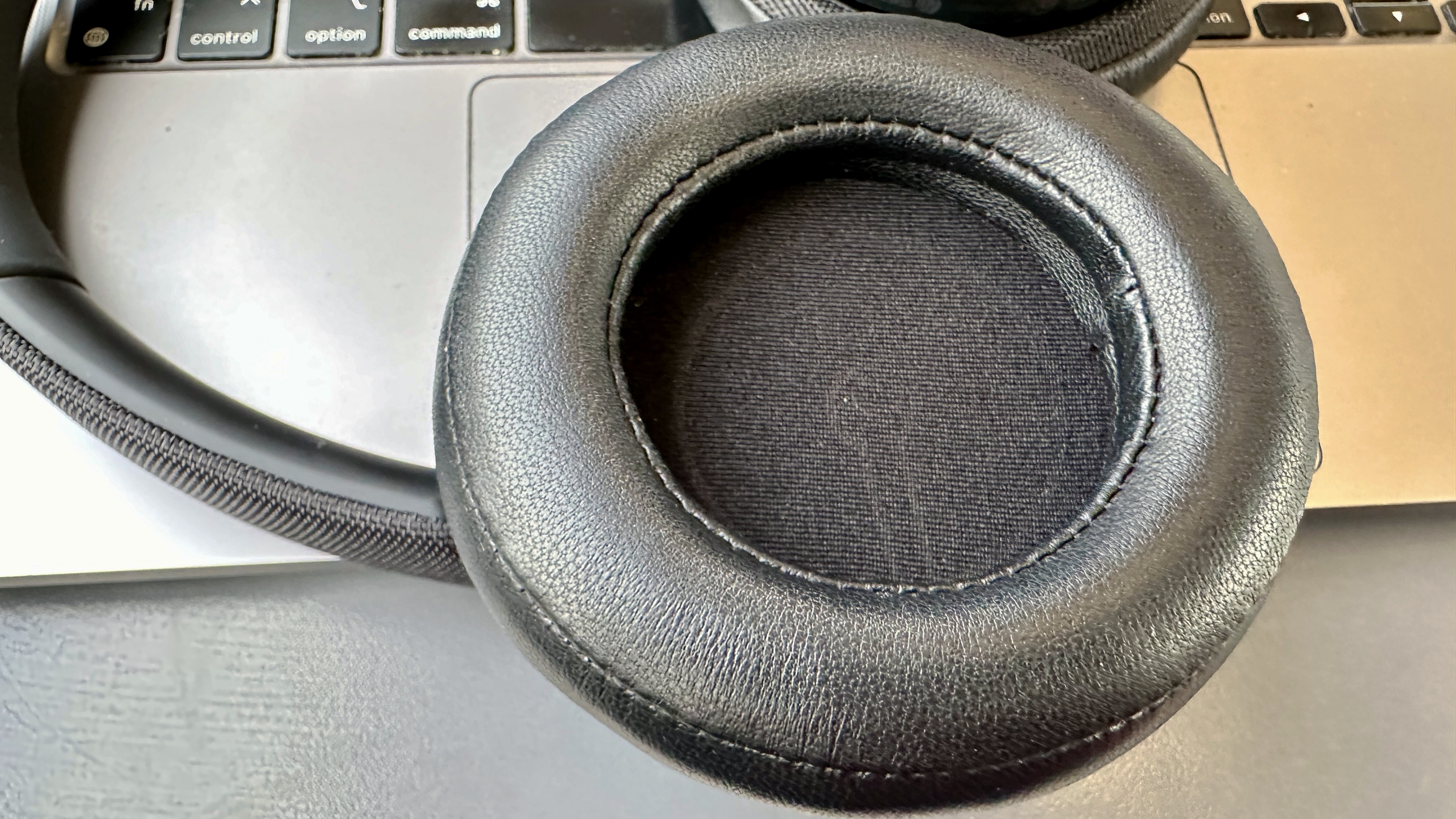
Connect the Dali IO-8 to a high-resolution source of music using its USB-C socket and they’re capable of dealing with 24bit/96kHz PCM content – anything bigger than that is downscaled before it’s converted to analogue information and delivered to your ears. And it’s fair to say that when heard this way, the IO-8 are an unarguable match for the best of their price-comparable rivals.
They enjoy persuasively naturalistic tonality, and their frequency response from the bottom-end to the top is smooth and even. At the top-end they attack with real purpose, offering ample bite and crunch – but never threatening to get unruly or in any way out of hand. There’s shine to treble sounds, but not even a hint of hardness – instead, there’s substance to balance out the brilliance.
The midrange communicates eloquently, which allows vocalists of all characters and all abilities to express themselves in full. Detail levels are as high here as they are everywhere else in the frequency range – but the sort of forensic insight the Dali deal in is especially welcome in the midrange, allowing singers to explain their emotions, their motivations and the secrets of their technique in full. There’s positivity to the way the IO-8 deliver a voice, a sense of engagement that’s by no means a given – no matter how much your headphones cost.
Leave the EQ setting at ‘hi-fi’ (which I am quite sure is what Dali would prefer) and the low-frequency response is deep, properly shaped, nicely varied and confidently controlled. There’s ample punch to bass sounds, but those sky-high detailed levels means textural and tonal variation is obvious – and the straight edges the IO-8 create at the onset of low-frequency information makes rhythmic expression convincing too.
Switch to ‘bass’ and the differences aren’t night and day – the low-end makes its way towards the front of the stage, for sure, but it doesn’t lose the run of itself. It simply hits a little harder and demands a little more prominence.

The soundstage itself is bigger, expertly defined and easy to follow – even if you're listening to complex, instrument-heavy music it’s easy to isolate a specific element thanks to the amount of breathing space everyone on the stage gets to enjoy. Don’t imagine that ‘isolate’ is in any way a negative here, by the way – these Dali headphones present music of every sort of complexity as a unified whole. The sense of togetherness and singularity the IO-8 create is, again, not a given by any stretch of the imagination.
Switch to a wireless connection via Bluetooth and all of the above, broadly speaking, still apply. There’s a predictable, though fairly minor, drop-off in detail levels, of course – but the IO-8 remain an expansive, informative and thoroughly entertaining listen when heard this way. Their ability to provide significant dynamic headroom, to stay alert to the most minor harmonic variations, and to create a big and convincing soundstage, are all unaffected by cutting the cord.
Dali, by its own admission, didn’t set out to offer the world’s best noise-cancelling headphones (which is just as well, because that crown belongs to Bose's QC Ultra Headphones for the foreseeable). The ANC that’s available here is effective, for sure, and will deal with much of the external hubbub that might otherwise distract you from the entertaining and engaging sound your headphones are making – and, most importantly, it does so without impacting the audio characteristics of the headphones in the slightest.
Dali IO-8 review: Design & Usability
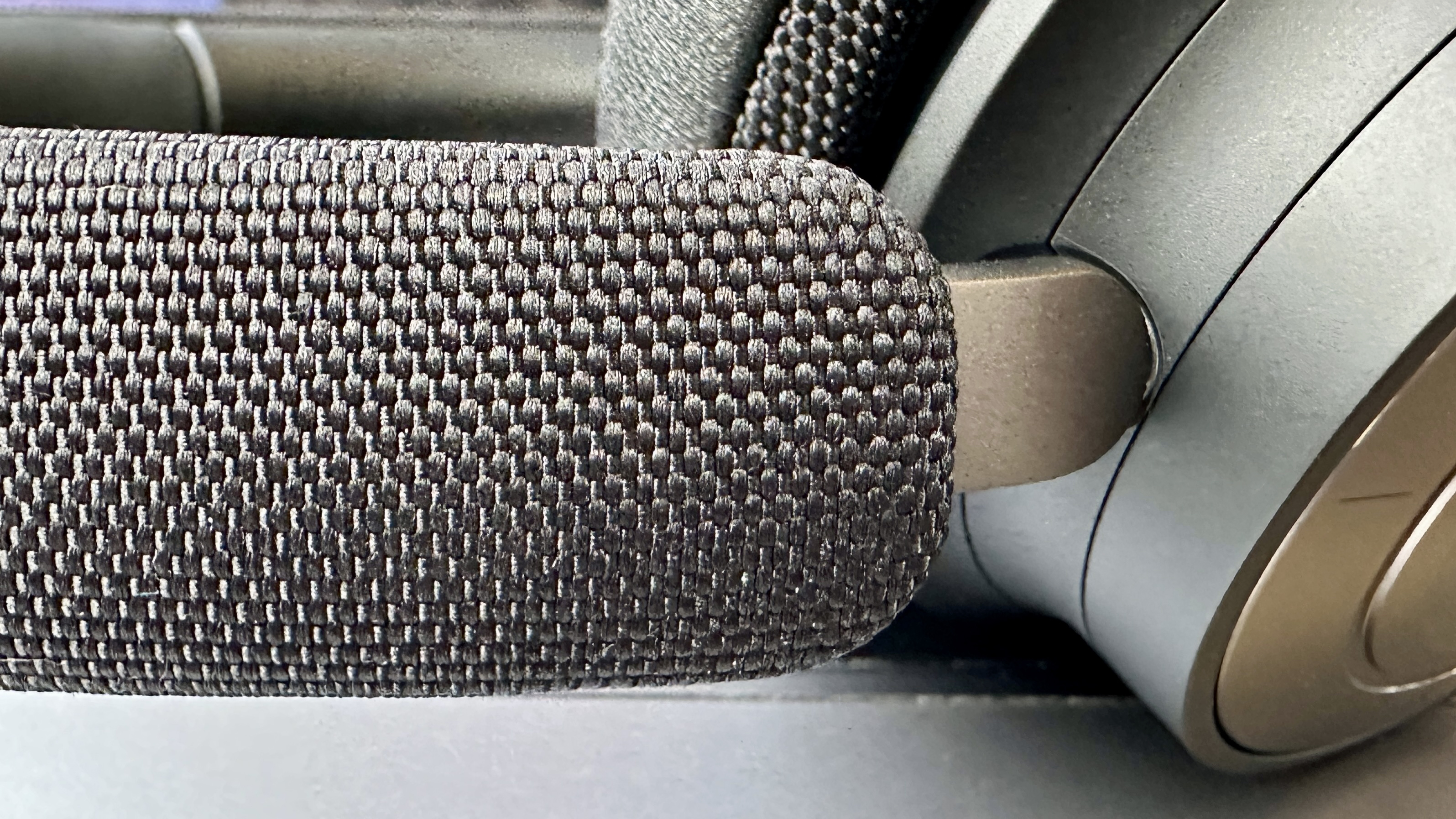
A brand has to be pretty gung-ho (for which read ‘reckless’) to seriously question the established design of wireless over-ear headphones – and Dali is emphatically not that brand. So the IO-8 are designed to look like what they are: a pair of premium wireless over-ear headphones.
They’re available in a ‘caramel’ white finish, as well as the ‘iron’ black of my review sample – but no matter which finish you choose, you’re buying a pair of understatedly good-looking headphones that are built from tactile materials and finished to the sort of standard the asking price demands.
The outside of the headband and a non-contact section of the earpads are finished in hard-wearing, beautifully applied textile. The contact section of the headband and the (replaceable) earpads are of leather-covered memory foam – again, it's flawlessly applied (though hardly inclusive where vegetarian customers are concerned).
The headband also conceals the adjustment mechanism – there’s plenty of adjustment available, and nicely judged resistance, so getting comfortable inside the IO-8 should be no problem even for the smaller-headed among us.
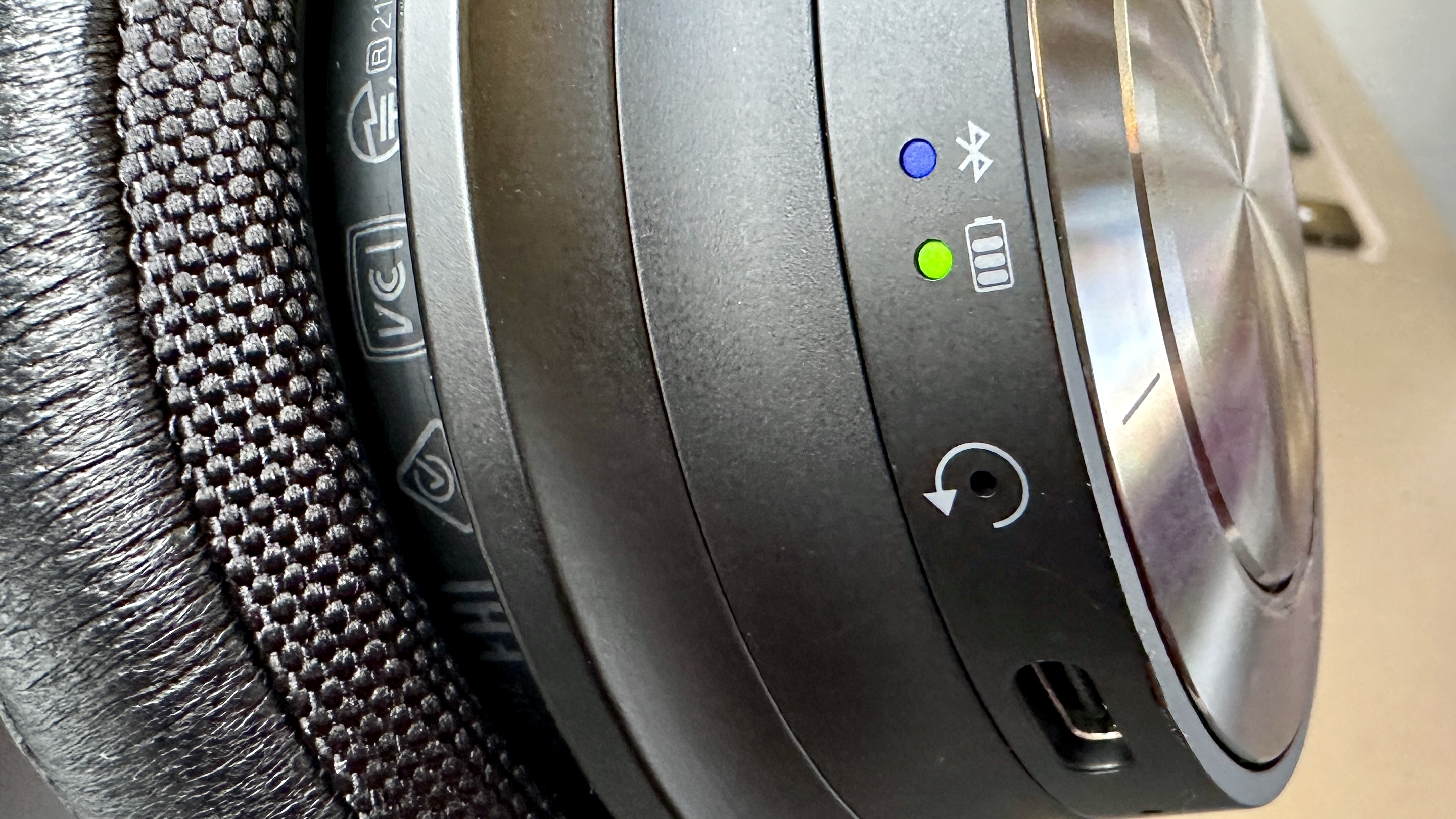
Both the earpads and the earcups backing them are circular, which is quite unusual in the world of premium wireless over-ear headphones. The back of the earcups are brushed and anodised metal, and carry some branding – in addition, the left earcup has a couple of mic openings and that 3.5mm analogue input (which, as said, allows the IO-8 to work as passive, wired headphones).
The right earcup has a pair of mic openings too, and also features touch controls on the surface of the earcup – volume up/down, play/pause, skip forwards/backwards and answer/end call. Around the edge of the earcup are the physical buttons that handle the EQ duo of choices, power on/off/Bluetooth pairing, and ANC on/off/transparency. There’s a couple of little LEDs that let you know what’s what as regards power, charging and pairing.
The IO-8 are compatible with your source player’s native voice assistant (should it have one), too. What there isn’t, though, is a control app. Dali makes a pretty strong case as to why the sonic tuning of the headphones (within its couple of EQ settings) is ideal, and why physical playback controls are perfectly adequate – obviously you’ll decide for yourself if part of the reason you’re spending all this money on headphones is to get access to a fancy-pants control app or not.
Dali IO-8 review: Verdict
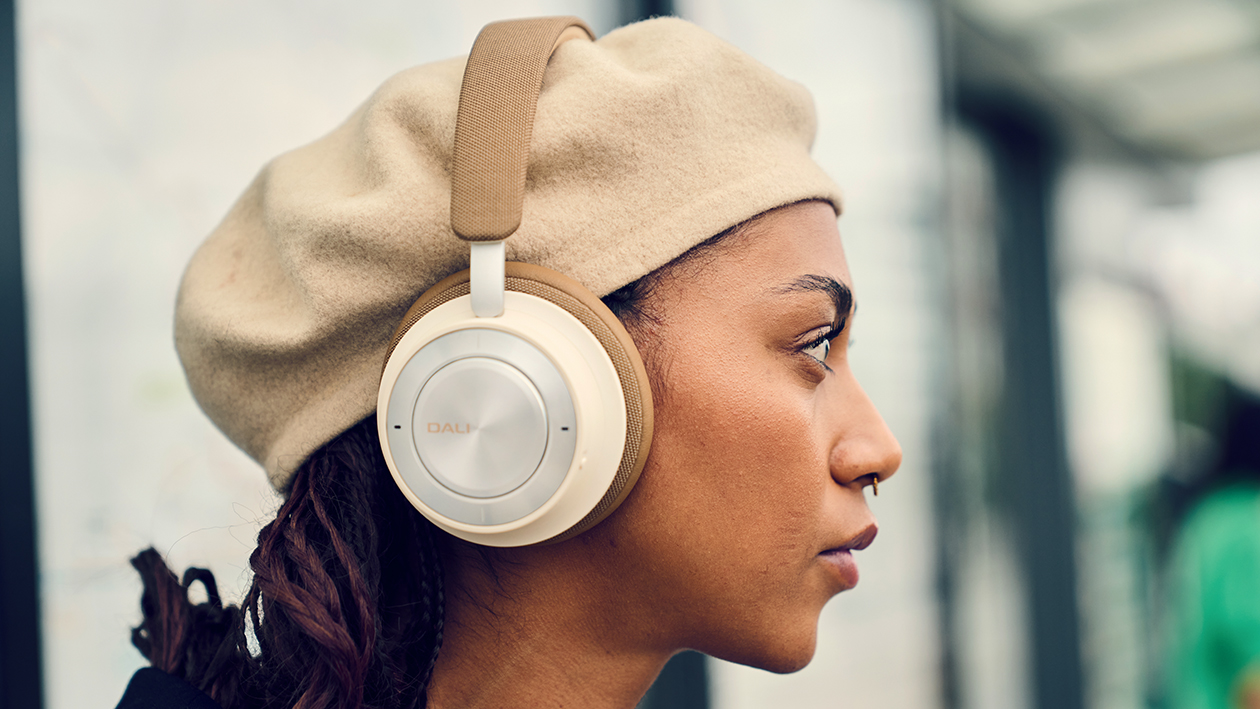
Proof that a brilliant pair of headphones doesn’t rely on an exhaustive feature-set, the Dali IO-8 have an awful lot to recommend them – most importantly, the balanced, insightful and endlessly entertaining sound they make.
They IO-8 may only be ‘affordable’ by Dali standards, but they represent money well spent nevertheless. And that's what's important: this kind of exquisite build and sound quality is value – for now and well into the future.
Also consider
The PX8 by Bowers & Wilkins are very similar to the IO-8 inasmuch as they’re the product of a well-regarded loudspeaker brand and they prioritise sound quality over wider functionality or convenience at every point. They’re similarly luxurious where build and finish are concerned, and similarly accomplished when it comes to sound quality – although it’s fair to say they do sound quite distinct from each other.







